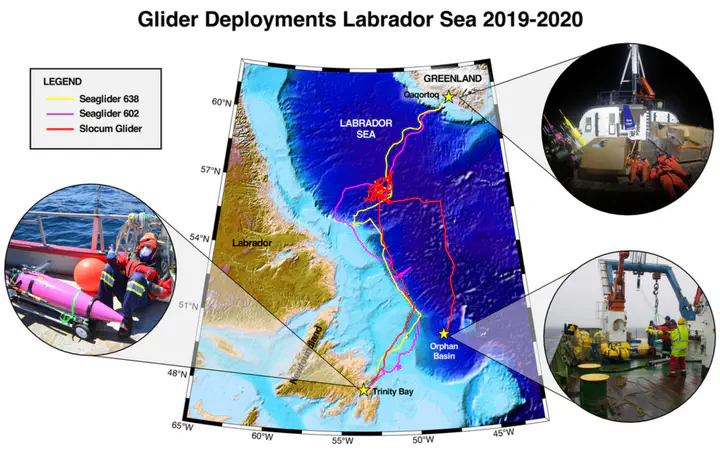
Abstract
The Labrador Sea is a fascinating and difficult environment in which to work. In the winter, wind speeds can gust upwards of 200 km/hr, while 10-m wave heights and below freezing temperatures (-20°C) are not unheard off, making it an inhospitable area for field work. Indeed, few ships are present in the Labrador Sea during the winter. However, the same harsh conditions have made the Labrador Sea a key region for Earth’s climate, with the wintertime conditions resulting in localized deep mixing of waters and carbon to great depths (2 km) in the ocean [Lazier, 1980; Pickart, 1997]. As a consequence, in-situ observations in the Labrador Sea are critical to advancing scientific knowledge on past and future climate change scenarios. Previous attempts to use ships for wintertime work required long expeditions at sea, but often with little data collected due to unworkable conditions. Autonomous marine vehicles provide an obvious solution to collecting in-situ data in the wintertime, as they can operate in extreme conditions yet still give us the flexibility to adapt our sampling during the mission [deYoung et al., 2018; Testor et al., 2019].